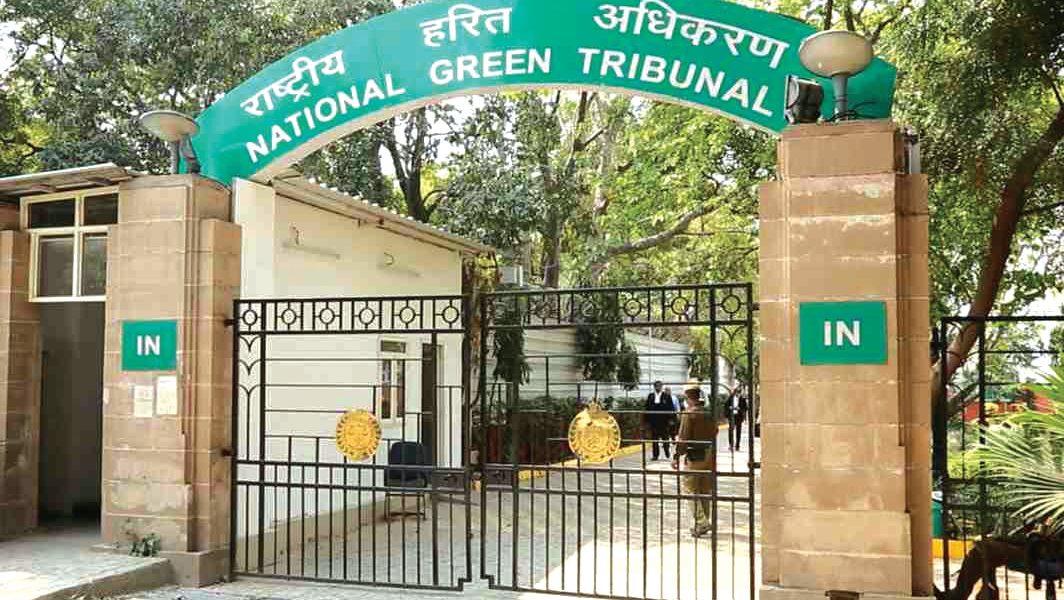The first part of this blog series introduced environmental crimes as a significant source of financial flows, triggering money laundering laws. It outlines the financial nature of ECs and the various forms it can take. The first part also critiques the Indian environmental law regime as inadequate, forming the stepping stool for the application of the PMLA, which this part does in detail.
Applying the PMLA to Environmental Offences
The constituents of money-laundering apply to ECs well beyond what is currently included in Schedule I. The constituents of money-laundering in India are: i) property; ii) derived/obtained directly/indirectly from; iii) a predicate offence.
1. Property and derivation directly or indirectly
When an entity is involved in an Environmental crime, the property derived from the unlawful act can be both tangible and intangible. Using the example of illegal logging and mining, the ore and timber derived would be the direct derivation of the unlawful act. It would also attach to the proceeds earned and invested by dealing in such ore and timber which would be an indirect derivation (For example, A sells unlawfully obtained ore for Rs 200 and buys a watch using said Rs 200, per the second limb, this watch would be an indirect derivation). This applies directly to the illegal trade in wildlife too. In cases of improper waste disposal, the savings from not properly disposing of waste may be considered indirectly derived property. In fact, it is corporations which are most involved in environmental offences and it has been found for instance by the Justice M B Shah Commission that top firms such as SAIL, Tata, among others have violated environmental laws, allowing them to earn profits at the expense of the environment, making such profits tainted.
The idea here is one of taint, which has been explained by the Supreme Court in Vijay Madanlal Chaudhary. The purpose of the PMLA is to confiscate any unlawful gain that is tainted, and taint attaches to anything that may be directly or indirectly obtained from an illegal act per Schedule I of the PMLA.
2. Predicate offence
Under this requirement, the property needs to be derived from a predicate offence. Property derived from ECs which are not predicate offences would not amount to proceeds of crime, thus, not triggering the PMLA.
The PMLA, as per its latest amendment in 2023, gives the status of predicate offences only to few offences under the Wildlife Protection Act and the Water Act. The 2023 amendment in fact removed offences under the Environmental Protection Act and Air Act from Schedule I. As per the Joint Parliamentary Committee Report on the Jan Vishwas (Amendment) Bill of 2022, the reason for the removal of these offences from Schedule I was the decriminalisation of these offences in the parent acts. The criminality of an act is not eliminated when imprisonment is no longer used as a punishment. Thus, if environmentally harmful actions are excluded from the scope of the PMLA, even if they yield substantive profits, it may incentivise offenders. Offenders may choose to commit these acts, reaping significant illegal gains while incurring only relatively minor penalties under existing environmental laws.
The list of scheduled offences is under-inclusive as it does not include key environmental offences such as illegal logging, illegal mining, and discharging untreated effluents in its ambit. The Indian approach to predicate offences being specifically mentioned in the Schedule is also problematic because this makes the process akin to a pigeon-hole. In fact, an interesting approach is followed in Switzerland where the predicate offence is not pre-defined but depends on the severity of the crime. Under Swiss law, only felonies constitute predicate offences, and a felony is any offence punishable by more than 3 years of imprisonment.
While the Swiss model may not be directly transplanted to India, the limited contention here is that the Indian model is narrow and hyper-reliant on rigid predicate offences which may not address emerging environmental offences. It requires certain flexibilities since environmental offences are not akin to traditional offences. As Bharat Vasani & Varun Kannan argue, the legislative intent of the PMLA was to comply with India’s commitments under the FATF, which to some extent remains defeated considering that the current system is too rigid and one which depends on the legislature’s amendments to decide whether or not money laundering is made out or not.
Why invoke AML laws for enforcement
The first reason to invoke the AML regime to tackle EC is its extraterritoriality. The PMLA allows invocation even if the predicate offence occurred outside India but the proceeds of crime were brought to India. This is particularly advantageous since the prosecution isn’t then dependent on the territoriality of the offence and the PMLA’s reach allows the authorities to pursue offenders irrespective of location, which is also in pursuance of the FATF’s aim of global cooperation in money-laundering cases.
Secondly, in most cases, the entities involved in ECs are companies and not individual persons, thus, the PMLA, which is aimed at recovering wrongful gains, would disrupt the financial incentives of these Companies as most ECs are motivated by profit. The purpose of the PMLA is not just to prevent offences but also to confiscate the unlawful gain. This is something that the present Environmental criminal regime does not adequately address. The PMLA thus can directly influence financial incentives that form the basis of these crimes, as authorities track down and confiscate the illicit gains negating the motive of ECs.
In many instances, criminal groups use international transit channels involved in trafficking unlawfully gained natural resources to route other smuggled property. Thus, AML enforcers are a good authority to combat such crimes since they are better equipped to track and combat financial crimes, and ECs are also a form of the same.
Additionally, as argued by Greife & Maume, Companies when fined or their KMP when held criminally liable face more negative collateral, thus, invoking the stringent AML regime to hold entities liable for ECs would increase deterrence. This is more important as it targets the underlying financial structure of the ECs which makes it a complementary tool to the existing framework. The author in no way suggests overhauling the system with the PMLA but merely suggests that its invocation in complement to the existing regime could have the effect of deterring ECs in the future.
Additionally, the author’s suggestion can be backed by the Kenyan example of linking environmental damage to public law remedies like in the Kelvin Musyoka case where the Court of Appeal recognised that pollution is not only the result of private actors but sometimes has to do with the lack of adequate measures on behalf of the State, making pollution a political economy issue as argued by Gautam Bhatia. Additionally, public law remedies may be effective in fulfilling constitutional rights such as the Right to a clean environment.
Recently, the NGT has started forwarding its orders and judgments to the ED which is an example of the recent rise in the understanding of money laundering vis-à-vis environmental crimes. While the SC recently held in an appeal against an order of the NGT directing investigation under the PMLA, that such an act is out of jurisdiction on a prima facie view, the author contends that this may not actually be the case since Rule 24 of the NGT Rules allows the NGT to pass any order to do complete justice. Additionally, such a move is also within its powers and not an overreach since the NGT on its own cannot investigate money laundering as only the ED can do so. Additionally, the Supreme Court’s observations on the lack of jurisdiction here have to be limited to the facts of the case and not be considered as a reading of the law since, in the case concerned, there was no registration of First Information Report under the Scheduled offences or any complaint made alleging violation of Environmental offences.
Conclusion
It may be asked as to how is it that fining or taking back the wrongful gain from the perpetrator helps when the harm is already caused to the environment. Such prospective punishment can have two objectives: deterrence and the “polluter pays” principle. The objective is to ensure that the costs of ECs are internalised ensuring the polluter pays for the societal cost of the harm caused. A fundamental idea behind using the PMLA for the purpose of environmental protection through criminal deterrence and attachment of wrongful gain is to give effect to the polluter pays principle and to ensure that no further harm may be caused to the environment.
This piece argues that the Indian money-laundering regime must be employed alongside the regulatory framework on environment to address ECs. The mere fact that there have been no convictions under the PMLA should not as a deterrent to invoking the same since enforcement gaps are not a flaw in the system itself. In order to perhaps give teeth to the PMLA, the concept of predicate offences needs to be understood separately, at least for ECs which are separate from traditional crimes in order to make it effective to combat ECs. Enhancing the current AML regime would also be in line with India’s commitments under the FATF as ECs are highly lucrative and engaged in novel ways making combating the same through traditional routes difficult and redundant.
Jyotpreet Kaur is a fourth-year student at NLU, Delhi.
[ Ed Note: This piece was reviewed by Hamza Khan and published by Baibhav Mishra from the Student Team.]





PiDBCatMOSI
qESEH3uJcjE